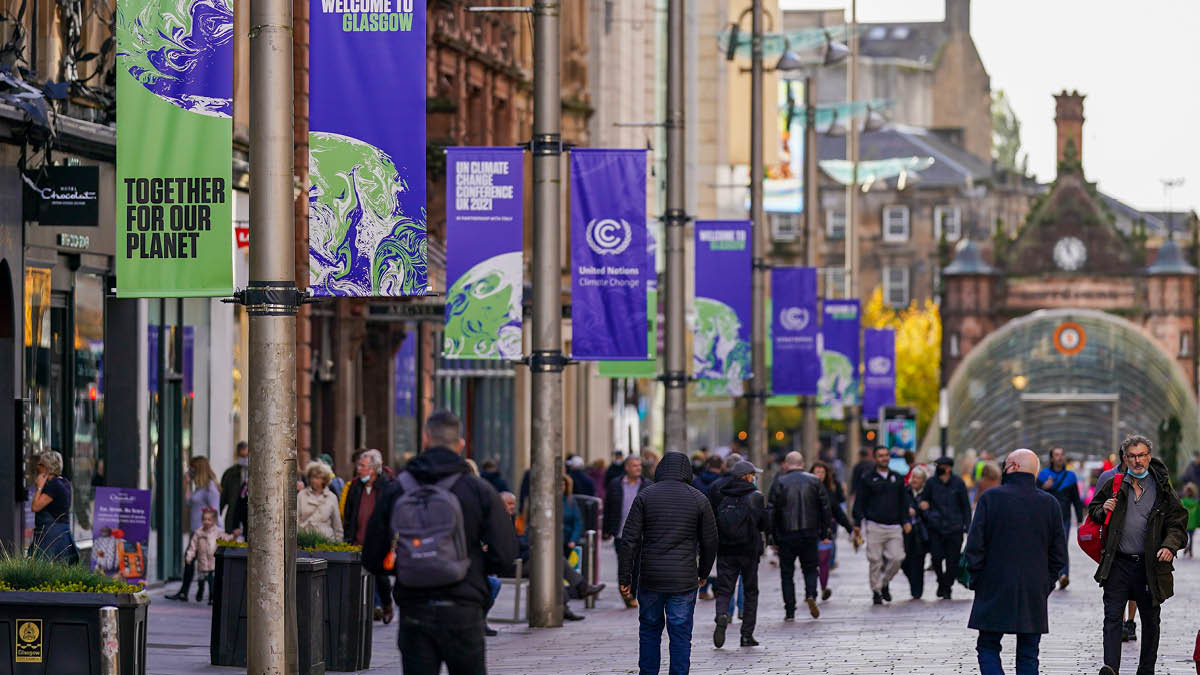
Climate change is clearly an existential threat to humanity. Through greenhouse gas emissions, we have increased the average temperature of the planet by 1.2C. The current climate policies adopted across the globe have put us on a path to a 2.7C increase. Clearly the current policies are not sufficient and we have to do more.
This makes COP26 particularly important. Why? Because according to the Paris agreement, all countries must tighten their climate commitments and roadmaps every five years as part of their nationally determined contributions (NDC). It is these combined roadmaps that determine whether we achieve the goals of the Paris agreement or not. COP26 is our best chance this decade to motivate countries, companies and citizens to play their part in ensuring that our planet is both liveable and affordable for us, our children and future generations.
Reducing energy demand and transitioning to green energy sources in buildings and homes is fundamental to the achievement of climate goals. Buildings are responsible for 28% of CO2 emissions, while building materials and construction are responsible for an additional 10%. Yet, the majority of climate roadmaps – the NDCs mentioned previously – do not specify decarbonisation targets for the sector or for the greening of heating energy carriers.
As a provider of heating and cooling solutions, Viessmann has a central role to play in accelerating the transformation towards a net-zero building environment. This is the reason behind our full commitment to COP. We are sending a wake-up call to policy makers: it is a matter of urgency that we give special consideration to buildings. We are also, of course, playing our part. We have just committed to reducing our own absolute emissions by 75% by 2030 compared to 2005 levels.
The key to achieving this net zero future can be summarised in four words: people, technology, finance and labour.
People
A net-zero building environment is first and foremost a fantastic opportunity to improve the lives and health of millions of people. In the wake of the coronavirus pandemic, people are much more sensitive to the state of their homes – how light, noise levels, air quality, temperature or mould affect their health and wellbeing.
The awareness and willingness to invest in better homes has never been higher. With the right policy framework, we can create the investment certainty for companies to meet that demand. Affordability and inclusivity are critical to secure the buy-in to the energy transition.
COP26 is our best chance this decade to motivate countries, companies and citizens to play their part in ensuring that our planet is both liveable and affordable for us, our children and future generations
The city of Liverpool, for example, is running a healthy homes programme that sets a benchmark for transformational policies: linking health care with home renovation programmes. Prosumer models, such as self-consumption models around photovoltaics, heat pumps and electric storage, will also help to involve people and even create a new sense of cohesion within energy communities. There are many opportunities.
Technology
Climate solutions already exist to deliver a net zero building environment: heat pumps, renewable-ready boilers, hybrid heating systems using green electricity and green gases, solar photovoltaic, solar thermal and district heating. Success will build on two trends: the increased electrification of heating systems fed by green electricity and the supply of green fuels, such as hydrogen.
Hydrogen in home heating will be instrumental in dealing with the high seasonality of home heating demand, particularly in winter when there is increased demand but often little sun or wind. In short, it will reduce energy systems costs, secure energy supply and add one more option to decarbonise heating in buildings, even if it is used in smaller quantities.
Smart homes will also help optimise energy consumption. For example when someone leaves their home, their intelligent home energy management system could reduce energy usage until they return or decide to heat their home using off-peak power. A home heating system could dynamically choose from a range of energy tariffs and therefore save the consumer money, while maintaining the same level of comfort for them and their family and ensuring the lowest level of CO2 emissions.
Financing
The largest financing gap for the achievement of climate goals lies in buildings. To look at it another way, there is a huge market for the financing community. The value of the European mortgage market is equal to more than half the EU’s GDP. Most energy renovation happens approximately one to three years after purchasing, which shows how much of a game-changing role banks can play in increasing energy-renovation rates.
There is a huge potential to grasp, by maximising synergies between the mortgage market and the construction and energy renovation markets. Public subsidies are especially effective in accelerating the modernisation of heating systems.
Labour
Climate policies can create more and higher qualified jobs. However, skilled installers, plumbers and tradespeople are already in short supply. We need a strong labour pact to attract new professionals and train people at scale – a clear priority for policy makers and industry. As an equipment manufacturer, we help to alleviate the pressures on labour by providing plug and play modernisation solutions that reduce installation time and complexity. At the Viessmann Academy, we also train more than 130,000 people per year.
With the support of people, technology, financing and a skilled labour force, we can embrace the transition to cleaner technologies. That will lead to a healthier world that not only can we be proud to hand to our children and future generations, but that we can live in safely and affordably today.
To find out more please visit viessmann.co.uk/lastchance
Promoted by Viessmann

